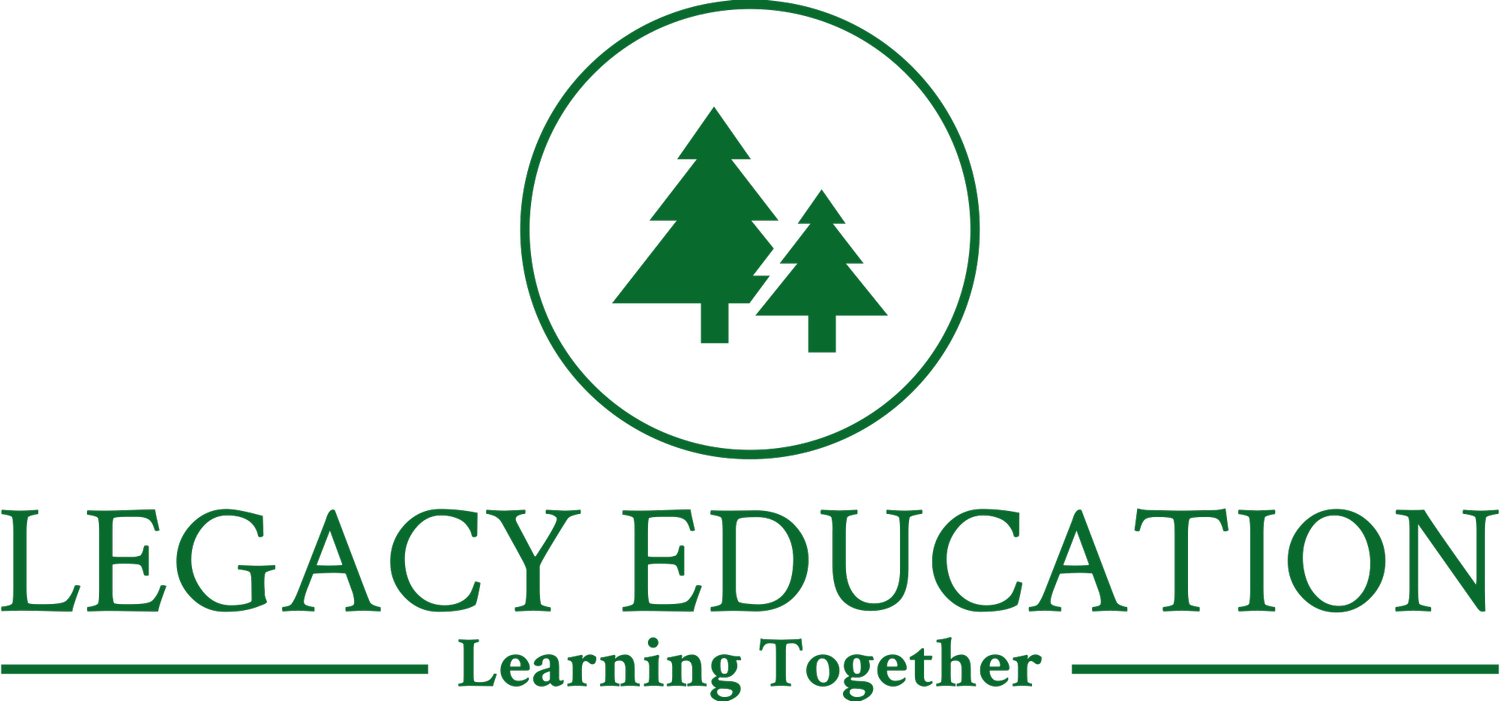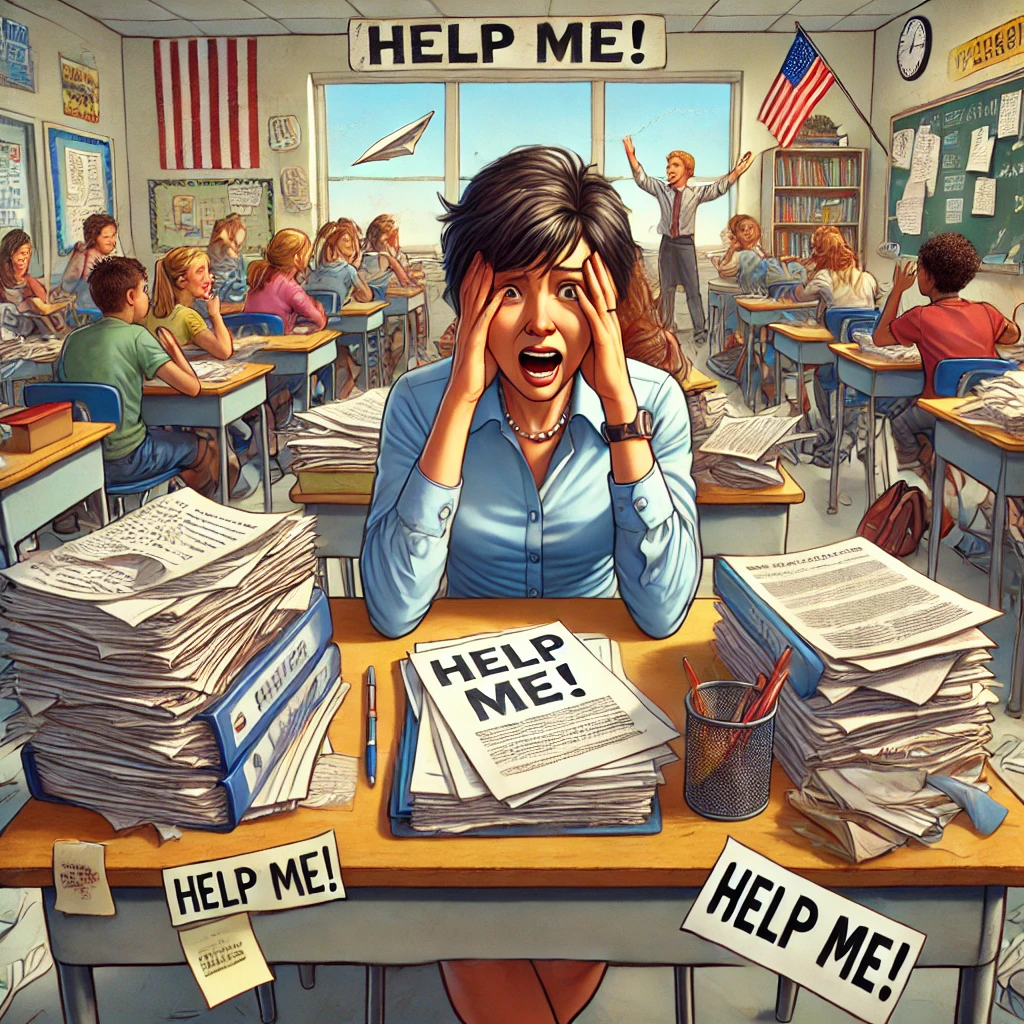"I Got Into Teaching To Make a Difference—But Everything’s Changed"
When I started teaching, I was full of purpose. Make the system better. Help kids. Inspire a few. Become a school leader. Make a difference.
You too? If you’re reading this, I bet you (or someone you know) signed up for this work because you wanted to be part of something meaningful. You wanted to teach, connect, and light up young minds.
But somewhere along the line, things changed.
“I just want to teach.”
That’s what I keep hearing. Teachers who are exhausted—not because they don’t love the job, but because they can’t find the job they signed up for in the middle of what the job became.
The overwhelm? It’s real. You’re managing behavior issues, learning differences, emotional dysregulation, 15 different “initiatives” from leadership, and more paperwork than a CPA in tax season. Meanwhile, you’re supposed to prep engaging lessons across 8 to 12 classes or subjects—within the same school schedule we’ve had since 1850, when kids learned reading, writing, and arithmetic... and then went home to work the farm.
Seriously—who thought this was a sustainable model? Because spoiler alert: it isn’t.
And the kids? They’ve changed too.
I don’t mean they’ve changed in the “kids-these-days” kind of way. I mean their brains have changed (see Monday's Neurodiversity Newsletter titled Are We Creating More Neurodiversity).
Jonathan Haidt’s The Anxious Generation is making this point clear: we’ve raised a generation of kids whose brains are being rewired by smartphones, social media, and a culture of constant surveillance and judgment.
Add in years of fear-based messaging (remember when we told them people could die if they breathed near each other?)—and we’ve got a generation whose amygdalas are on high alert 24/7.
The amygdala is the part of the brain that triggers fight, flight, or freeze. And in today’s kids? It’s running the show.
Research from Tottenham et al. (2010) and Lichtblau et al. (2022) shows that kids today have amygdalas that are larger, more reactive, and more dominant than previous generations. This isn’t just a handful of neurodiverse kids—this is happening across the board.
We’re living in a time when acquired neurodiversity is a thing. The world has changed, and our students’ brains have changed with it.
But our schools? Still stuck in 1850?
Think about it:
Same schedule.
Same factory-model structure.
Same one-size-fits-all approach.
Only now we’re trying to cram in 8 to 12 subjects instead of three. Only now we’re asking kids with hyper-reactive nervous systems to sit still, focus, and perform in a setting that was never designed for how they work.
So I beg the question: Who is this working for? Not kids. Not teachers.
The Teacher Sustainability Crisis.
According to the latest data from the National Center for Education Statistics (NCES), nearly 44% of teachers leave the profession within the first five years. The workload is unsustainable, with teachers juggling increased behavioral issues, administrative demands, and curriculum overload, often with little support. Burnout is no longer the exception; it’s the rule. If we want to keep talented educators in the classroom, we need systems that focus on sustainability—reducing cognitive load, simplifying routines, better pay, and supporting teacher well-being in real, tangible ways. Because no teacher can pour from an empty cup... or wallet. $50,000 debt for a 5-year career? Who would do such a crazy thing?!
So what do we do?
Here’s where I land: we can’t keep tinkering around the edges and hoping for the best. We need a mindset shift. We need new systems.
And if you ask me, here’s where we start:
1. Predictability and Routines Aren't Optional
When a kid’s amygdala is on high alert (and many are), unpredictability isn’t exciting—it’s terrifying. We need school environments that are predictable. Clear routines. Thoughtful transitions. I'm not talking about sterile clinical settings. Teachers who model calm, consistent energy. (Bruce Perry’s work in What Happened to You? nails this.)
2. Strengths, Not Deficits
We’ve spent too long pathologizing kids for struggling in a system that was never built for them. It’s time to focus on their strengths. Whether you’re using UBP/NAILEP, StrengthsFinder, or just plain old healthy relationship-building, we need to start showing kids what’s right with them. As Tom Rath says, “You cannot be anything you want to be—but you can be a whole lot more of who you already are.”
3. Teacher Sustainability Is Non-Negotiable
You can’t outrun burnout. We need systems and tools that make teaching sustainable—not just for the saints who want to die at their desks, but for everyone. That’s why I wrote Universal Best Practices for All Learners. Because teachers need strategies that actually work in today’s classrooms. And they need them yesterday.
You got into teaching to make a difference…
And you have and still can. But those outside schools need to stop pretending and telling us the job hasn’t changed. It has. And we need to change with it.
We can’t keep using a playbook from 1850 - or even 2010 - for a generation that lives in 2025. We need schools that work for today’s kids and today’s teachers.
And it starts with us.
Want to talk about what that looks like? Grab your copy of Universal Best Practices [here]. Or reach out directly to talk about how we’re helping schools rethink the system for today’s learners.
References
Tottenham, N., & Sheridan, M. (2010). A review of adversity, the amygdala, and the hippocampus: A consideration of developmental timing. Frontiers in Human Neuroscience, 3, 68.
Lichtblau, N., Kuehn, E., Kanske, P., Schermuly-Haupt, M. L., & Wessa, M. (2022). Altered amygdala and hippocampus connectivity in children and adolescents exposed to early adversity. Journal of Psychiatry & Neuroscience, 47(5), E246–E256.
Haidt, J. (2024). The Anxious Generation: How the Great Rewiring of Childhood Is Causing an Epidemic of Mental Illness. Penguin Press.
RAND Corporation. (2023). State of the American Teacher: Survey Results. Retrieved from https://www.rand.org/pubs/research_reports/RRA1108-5.html
National Education Association. (2022). Survey: Alarming Number of Educators May Soon Leave the Profession. Retrieved from https://www.nea.org/nea-today/all-news-articles/survey-alarming-number-educators-may-soon-leave-profession
Gallup. (2024). CliftonStrengths Assessment (StrengthsFinder). Retrieved from https://www.gallup.com/cliftonstrengths
Meyersieck, A. (2024). Universal Best Practices for All Learners: Discover Your Teaching Strengths. Legacy Education Group. Retrieved from https://www.legacy-ed.com
Legacy Education Group. (2024). NAILEP: Neurodiversity & Inclusion Learning Environments Profile. Retrieved from https://www.legacy-ed.com/nailep

